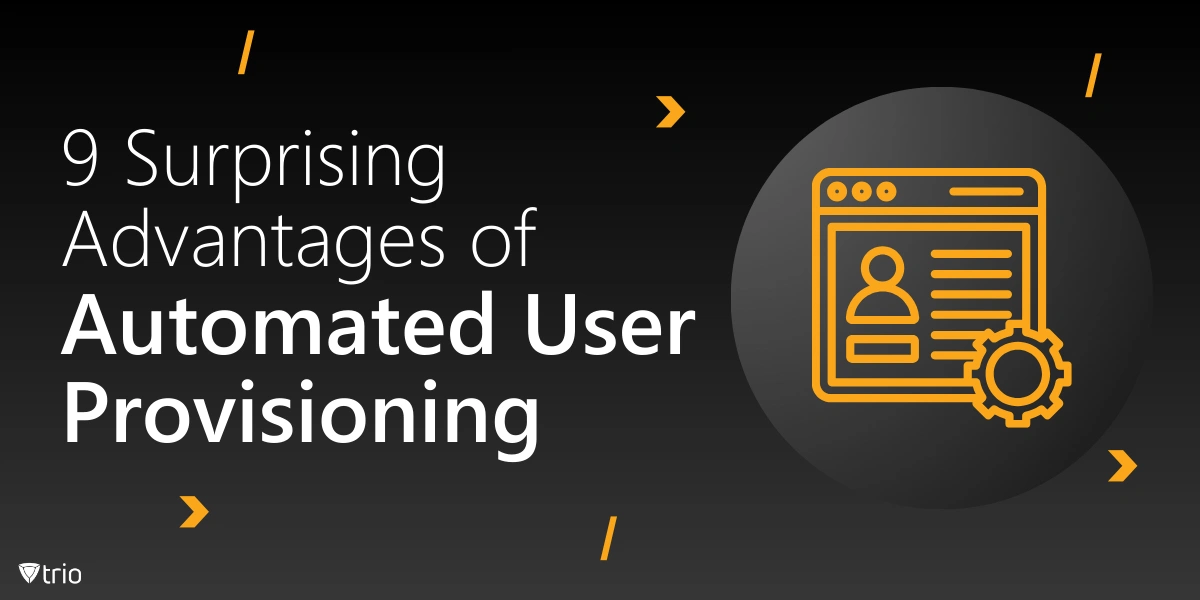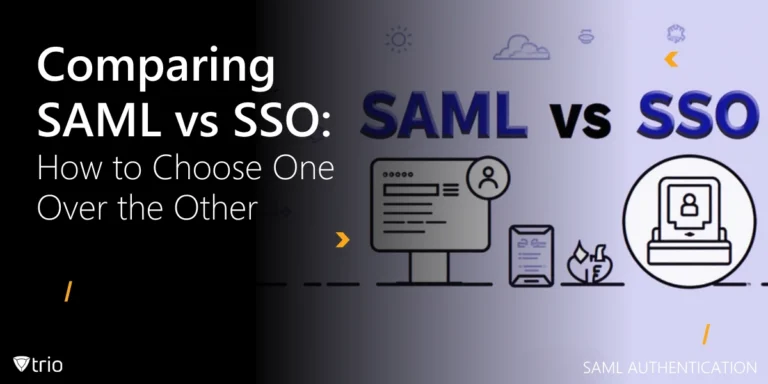Managing user accounts can feel like defusing a bomb—intense and risky without safeguards. This is why automated user provisioning matters now more than ever. The meaning of user provisioning revolves around simplifying how organizations create, update, and deactivate accounts. It’s a process designed to keep systems secure, data protected, and compliance requirements effortlessly met.
So, what’s the definition of user provisioning? It’s the structured process of granting and revoking access rights based on specific roles, job functions, and organizational requirements. Pairing it with MDM (mobile device management) gives businesses extended control over devices, software, and sensitive data, drastically reducing vulnerabilities. By automating these tasks, companies eliminate human errors, speed up workflows, and ensure systems remain audit-ready at all times.
Curious about how this transforms operations? Let’s dive into 9 surprising advantages of automated user provisioning and highlight how it empowers modern organizations to boost efficiency, security, and scalability without adding complexity.
1. Lightning-Fast Onboarding Processes: Instant Access, Zero Stress
Remember the awkward first day at work, waiting hours for email and software permissions? Automated provisioning eliminates this headache entirely. An automated user provisioning example demonstrates seamless syncing between HR systems and IT tools, automatically granting access as soon as an employee joins. This eliminates bottlenecks, sets employees up for success, and creates a productive work environment from day one.
The result? Productivity begins immediately. No chasing IT tickets or fixing mismatched credentials. Employees access the tools they need without delays. Manual onboarding, often compared to assembling IKEA furniture without instructions, feels chaotic. Automation, on the other hand, is like pressing a single button—clean, fast, and reliable. Teams start strong, and companies operate at full throttle from the get-go.
Automated workflows also help organizations avoid inconsistent setups and lost time. New hires no longer need to struggle with login issues or incomplete profiles. Instead, automated systems simplify the entire process, empowering both employees and IT teams to focus on growth.

2. Error-Free Offboarding at Scale: Cut Ties Cleanly
Employees leave, but their accounts often linger like ghosts haunting the server room. Automated workflows using bulk deployment tackle this issue head-on, ensuring accounts are deactivated promptly and securely. No manual intervention is required, reducing errors and delays. This swift action protects sensitive data while simplifying offboarding processes for businesses of any size.
Security gaps shrink because orphaned accounts—the forgotten doors hackers love—vanish without a trace. Scheduled triggers or exit protocols seamlessly revoke access, eliminating vulnerabilities caused by human oversight. With automation in place, companies minimize risk and improve compliance without adding administrative burden.
Organizations can breathe easier, knowing their data is safe, even when employees move on. Automated offboarding not only prevents unauthorized access but also streamlines resource management. This is offboarding without the drama—clean, fast, and absolutely secure for businesses looking to safeguard their systems.
3. Reduced Human Intervention—and Mistakes: Hands Off, Heads Clear
Humans excel at creativity but struggle with repetitive tasks. This makes manual provisioning a recipe for errors. Misspelled emails, duplicate accounts, and forgotten permissions lead to chaos. Automated provisioning tools eliminate these risks by enforcing policies, syncing data flawlessly, and ensuring smooth operations without the need for constant supervision or tedious manual oversight.
Fewer mistakes translate into stronger security, fewer headaches, and significant time savings. Automation not only minimizes human errors but also delivers consistency across workflows. IT teams can finally focus on meaningful, high-impact projects rather than wasting hours fixing avoidable errors or troubleshooting permission mismatches.
Automation doesn’t get tired, distracted, or require coffee breaks—it simply gets the job done. It standardizes processes, reduces vulnerabilities, and improves efficiency. With automated provisioning in place, organizations enjoy smoother operations and the confidence that their systems are accurate, secure, and audit-ready at all times.
4. Role-Based Access Control (RBAC) Made Simple: Right Access, Every Time
Giving the right people access to the right tools should be simple. Access provisioning with role-based access control (RBAC) delivers exactly that. Employees receive permissions based on job roles automatically—no spreadsheets, no scrambling. This approach ensures every user gets the precise access they need without exposing sensitive systems to accidental or unauthorized use.
Simplified permissions reduce misconfigurations and strengthen data protection. Automated provisioning tied to RBAC eliminates manual errors and enforces consistent access rules across the board. With scalable systems, organizations can handle workforce changes without worrying about gaps in security or compliance violations.
IT managers rest easier knowing that new hires won’t gain unauthorized access to confidential data. Automated RBAC frameworks make onboarding and role changes smooth and reliable, keeping operations agile while maintaining strict security standards. It’s a win-win for both security and scalability.
5. Streamlined Regulatory Compliance: Audit-Ready, Always
From GDPR to HIPAA, compliance isn’t optional—it’s survival. Automated provisioning simplifies compliance through configuration management, ensuring access logs, permissions, and activity tracking remain accurate. Businesses gain peace of mind knowing that every access point is documented and accounted for, providing a strong foundation for audits and regulatory reviews without relying on manual updates.
Auditors love clear, consistent records, and businesses benefit from avoiding costly fines. Scheduled reporting ensures organizations remain audit-ready year-round, saving time and eliminating last-minute scrambles to produce documentation. Automation strengthens compliance frameworks by maintaining accurate logs and enforcing policies without human errors or delays.
Automation doesn’t forget details or skip steps. It tracks every access change and ensures permissions align with evolving regulations. This reliability makes automated provisioning an ideal compliance partner, reducing risks and simplifying the complexities of regulatory management for modern organizations.
6. Effortless Integration With Existing Systems: Sync and Scale
Modern organizations juggle countless tools—HR software, email systems, and cloud platforms. Automated user provisioning for Active Directory solutions acts as the glue that binds these systems, ensuring seamless updates and data consistency. By syncing databases in real time, businesses eliminate manual errors and improve operational efficiency without disrupting workflows.
Changes made in one system instantly update across others, preventing inconsistencies and reducing vulnerabilities. Integrated solutions simplify processes by minimizing redundancies and automating updates. With fewer manual interventions, IT teams can focus on strategic growth rather than repetitive administrative tasks.
Scaling systems has never felt this effortless. Automated provisioning allows businesses to adapt to growth without creating bottlenecks. It reduces overhead, maintains data accuracy, and supports larger user bases with ease, ensuring businesses stay agile and competitive in today’s fast-paced environment.
7. Consistent Access Governance and Reporting: One Dashboard to Rule Them All
Uniform governance matters when juggling multiple systems and users. With device provisioning strategies and automated workflows, businesses can monitor access policies from a centralized dashboard, reducing complexity. This approach simplifies management by offering full visibility into permissions and ensuring that changes are implemented consistently across systems without delays or errors.
Scheduled reports provide actionable insights, helping organizations track access patterns and enforce compliance. Automated rules further streamline governance, enforcing policies without human intervention. This reduces the risk of oversight while improving accountability, allowing IT teams to focus on more strategic priorities rather than manual monitoring tasks.
The result? Fewer gaps, enhanced oversight, and a governance model designed to scale alongside growing businesses. Organizations benefit from real-time data and automated enforcement, creating a secure, adaptable framework that supports long-term growth and operational efficiency.

8. Enhanced Security Through Lifecycle Management: Stay Secure at Every Stage
User accounts are constantly evolving as employees receive promotions, switch departments, or leave organizations. Auto-provisioning rules in Oracle Fusion ensure permissions are updated automatically, granting or revoking access as roles change. This dynamic approach reduces manual oversight and guarantees that users only have the permissions they need—nothing more, nothing less.
Lifecycle management takes security a step further by preventing unauthorized escalation and removing stale credentials. Automated updates keep permissions in sync with organizational changes, eliminating vulnerabilities before they become risks. This proactive method strengthens security without relying on reactive measures, giving businesses full control over user access.
By combining auto-provisioning and lifecycle management, organizations build a system that adapts to growth while maintaining strict security. Permissions remain current, risks are minimized, and teams can operate with confidence, knowing their systems are protected and compliant at every stage of a user’s journey.
9. Cost-Effectiveness and ROI: Smarter Spending, Better Results
Time saved equals money saved. Automated provisioning slashes administrative costs, reduces errors, and boosts efficiency. Businesses can reduce IT costs without sacrificing security or performance. With fewer manual tasks, teams focus on strategic priorities, creating a more agile and competitive environment ready to handle growth.
Organizations see both immediate and long-term ROI—from minimizing human errors to reducing security risks. Automated systems streamline operations, ensuring consistency and accuracy at every stage. This approach not only eliminates redundancies but also future-proofs businesses against scaling challenges, making growth smooth and cost-effective.
Investing in automated provisioning isn’t about cutting corners—it’s about building smarter, sustainable solutions. By leveraging automation, companies position themselves for sustained success, improved compliance, and enhanced operational efficiency. The returns go beyond monetary savings, offering long-term security and adaptability in an ever-changing business landscape.
Trio: Unlock Simplicity With Our MDM Solutions
MDM (mobile device management) works hand-in-hand with user provisioning, ensuring devices are managed as seamlessly as user accounts. Trio’s solutions unify these processes, delivering a secure, scalable system that reduces complexity and boosts efficiency. With integrated automation, businesses can confidently control data access and device usage, creating a streamlined approach to security and performance.
Imagine cutting onboarding time in half while strengthening compliance and security—Trio’s automated provisioning makes this possible. From new hires to role changes, Trio dynamically adjusts permissions and device access, eliminating delays and manual errors. This level of flexibility empowers businesses to grow without worrying about outdated credentials or unauthorized access.
Why wait to experience smarter, stress-free provisioning? Trio combines automated provisioning with robust device management for enterprises that refuse to compromise on security or scalability. Ready to see it in action? Sign up for a free demo today and discover the future of automation!
Conclusion: Embrace Automation for Growth
Automated user provisioning isn’t just about keeping up; it’s about leading the charge in security, compliance, and efficiency. These nine advantages highlight how automation simplifies processes, reduces risks, and sets organizations up for scalable growth.
Whether you’re onboarding, offboarding, or enforcing policies, automation brings reliability and speed without sacrificing security. It’s a sustainable, forward-thinking approach to identity and access management.
Take a moment to evaluate your current processes. Are they built for growth? If not, automation might be your smartest next step. The future of user provisioning is here—don’t let it pass you by.
Get Ahead of the Curve
Every organization today needs a solution to automate time-consuming tasks and strengthen security.
Without the right tools, manual processes drain resources and leave gaps in protection. Trio MDM is designed to solve this problem, automating key tasks, boosting security, and ensuring compliance with ease.
Don't let inefficiencies hold you back. Learn how Trio MDM can revolutionize your IT operations or request a free trial today!




